Exploring the Top 10 Dark-Tourism Destinations in the Philippines - A Haunting Journey through the C
Discover the eerie beauty of the Philippines' Top 10 destinations for Dark-Tourism. From WWII battlefields to haunted prisons, we take you on a journey through the country's darkest moments. Explore the Bataan Death March Memorial, the Corregidor Island, and the Fort Santiago, and learn about the incredible stories behind them. True to its nickname as the Pearl of the Orient, the Philippines offer an off-the-beaten-path experience that is both haunting and unforgettable. Join us as we explore the country's fascinating history and uncover the hidden gems that have made it one of the top destinations for Dark-Tourism around the world.
Try our AI-based destination finder tool
Find your perfect travel destination based on your individual preferences with our cutting-edge AI technology.
Get started
Corregidor Island
Corregidor Island is a perfect blend of history and intrigue, which makes it an ideal destination for those inclined towards dark tourism. The island's rich past and several historical events have left behind an eerie presence, making it an intriguing place to explore for those with a morbid fascination for the past. Located at the entrance of Manila Bay, Corregidor Island served as a stronghold and bastion of defense during World War II and the Japanese occupation. Exploring the tunnels and ruins of the Pacific War Memorial Museum will give you an insight into the heroic struggles of American and Filipino soldiers and their valiant efforts to defend the island from Japanese invaders. The presence of abandoned barracks and decaying structures from the war will leave you with a chilling reminder of the past. However, the island has more to offer than just its dark history. The picturesque island boasts of stunning views of the sea and lush vegetation. Take a hike or bike ride through the jungle trails, and you will witness the different flora and fauna unique to the area. Additionally, the island is a great bird-watching spot, with rare endemic species making frequent appearances. Overall, Corregidor Island is a perfect destination, especially for those interested in dark tourism. The island's rich history and chilling aura make it a unique and intriguing place to visit.

Fort Santiago
Fort Santiago in Manila, Philippines is one of the top destinations for Dark-Tourism enthusiasts. This historical site represents not only the colonial past of the Philippines but also the harrowing experiences that the Filipinos went through during World War II. Exploring this fort is like taking a peek behind the curtain of the country's tumultuous past. From the moment you step into the fort, you can feel its dark past haunting every nook and cranny. In the dungeons and prison cells, where many Filipinos were kept and brutally tortured by their Spanish colonizers, you cannot help but feel a sense of unease. The Rizal Shrine, which is located within the fort's walls, will take you through the life of Dr. Jose Rizal, a famous Filipino hero who was persecuted and executed by the Spanish for his political beliefs. Moreover, the fort is also a reminder of the Japanese occupation in the Philippines during World War II. Japanese soldiers used the fort as a prison camp and torture chamber, leaving behind a grim reminder of the atrocities that occurred during that time. Fort Santiago is an important destination for Dark-Tourism, as it offers a glimpse into the dark and troubled history of the Filipino people. It is a place where you can learn about the country's colonial past and the struggles that Filipinos faced. This historical site is not for the faint of heart but is an essential visit for those who are interested in understanding the darker side of history and the stories of resilience that come along with it.
Bataan Death March Memorial
The Bataan Death March Memorial in the Philippines is a destination that has become popular for tourists seeking to experience and learn about the darker side of history. This memorial is a somber reminder of one of the most devastating events of World War II - the Bataan Death March, where over 70,000 American and Filipino prisoners of war were forced to march for 65 miles to their next destination. For those who are interested in learning about the devastating effects of war, the Bataan Death March Memorial offers a chance to experience the horrors of what happened during this dark period of history. From the remains of the war relics and the emotional stories of survivors, this memorial offers a deeper understanding of the atrocities that occurred during those years. Beyond educational purposes, this memorial is also a great destination for people looking to pay their respects to those who suffered and lost their lives during the Bataan Death March. Visitors can participate in the memorial services and ceremonies held every year in the month of April to honor the brave souls who fought for their country. In conclusion, for anyone looking to experience a more profound and historically significant vacation, the Bataan Death March Memorial is a destination that must be on their bucket list, where one can learn about the value of human freedom and the tragedy of war.
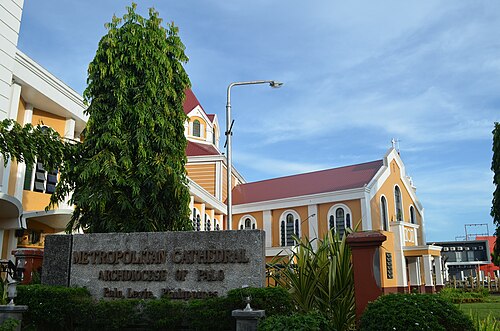
Leyte Landing Memorial
There are few historical sites as compelling as the Leyte Landing Memorial. This solemn and reflective attraction marks the site where General Douglas MacArthur famously returned to the Philippines at the end of World War II. Its somber reminder of the significance of this moment in history makes it a great destination for those interested in dark tourism. The memorial's atmospheric design and beautiful location make it the perfect place to pay homage to the thousands of lives lost during war, while also reflecting on the bravery of those who fought and died for their countries. Walking through the grounds and taking in the evocative details of the memorial is a poignant experience that will leave a lasting impression on any visitor. The Leyte Landing Memorial is a testament to the power of human resilience and bravery in the face of conflict. It inspires reflection and a deeper understanding of what soldiers and their loved ones have endured throughout history. For those interested in tourism that delves into the darker aspects of human history, the Leyte Landing Memorial is a must-visit destination. With its haunting beauty and historical significance, it offers a unique opportunity to connect with the past and reflect on the human cost of war.

Manila American Cemetery and Memorial
If you're a fan of dark tourism, then the Manila American Cemetery and Memorial is a must-visit destination. This place holds a significant historical value and pays homage to the brave American soldiers who gave their lives during the Second World War. Located in the Taguig City of Manila, this cemetery and memorial is the largest American Cemetery outside of the United States and honors soldiers who served in the Philippines and the surrounding areas. Upon entering the memorial, you'll see 17,184 white cross markers that signify the graves of the fallen soldiers who were killed in action or those who died in captivity. There's a wall of missing soldiers, a chapel, and a circular memorial that bears the names of 36,282 US military personnel who gave their lives during WWII in the Asia-Pacific region. The serene atmosphere of the cemetery and memorial offers a unique and poignant experience of paying respects to those who lost their lives fighting for freedom. The sight of thousands of white crosses and the details about the background and sacrifice of each soldier is a solemn reminder of the atrocities of war. Exploring the Manila American Cemetery and Memorial is a humbling experience that will leave you with a better understanding of the strong bond between the Philippines and the United States of America. This is a great place that will appeal to those who enjoy dark tourism and want to pay their respects to the heroes of the past.
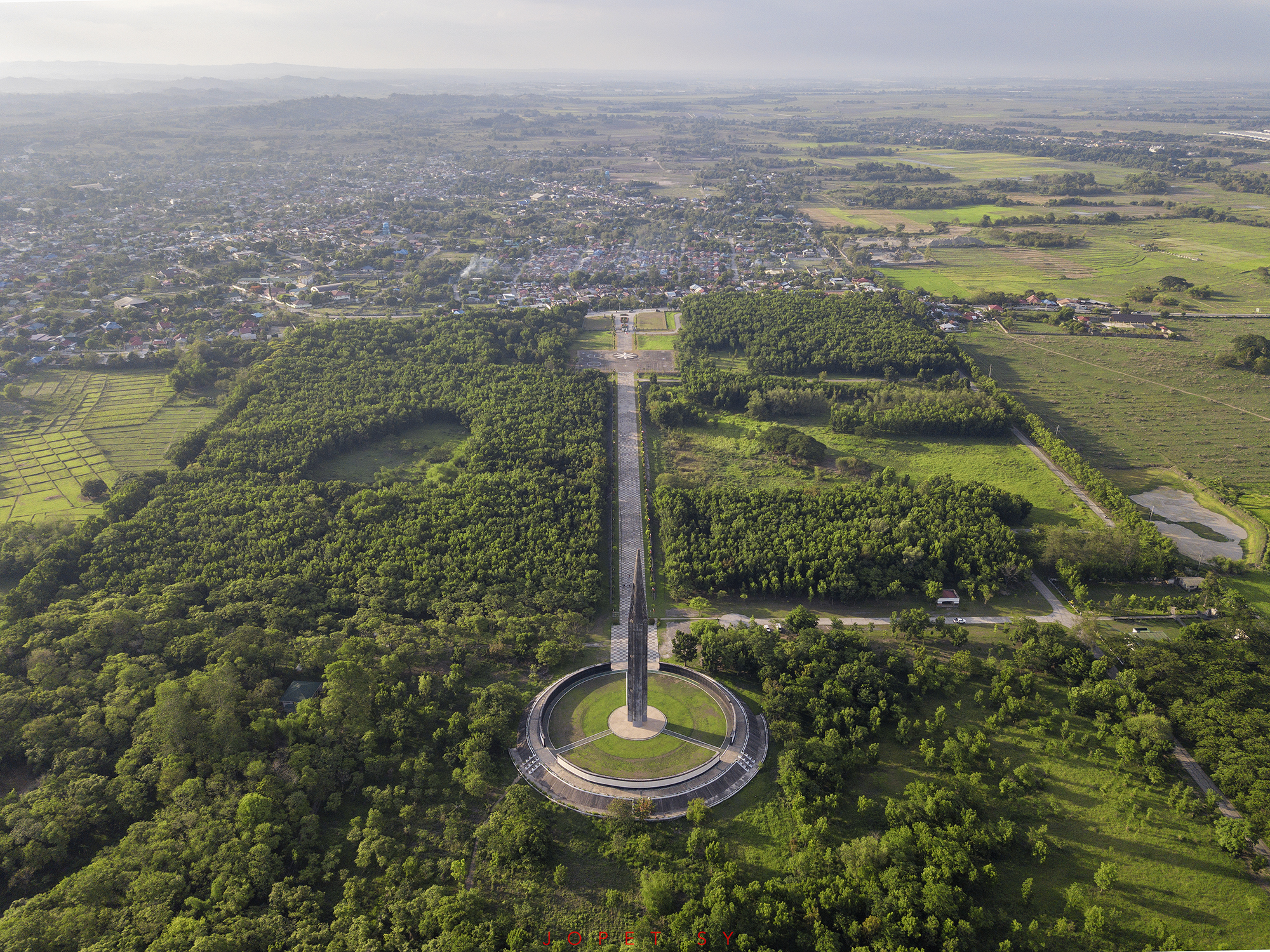
Capas National Shrine
Capas National Shrine is a wonderful destination for those interested in dark tourism. Located in Tarlac, Philippines, this historical site commemorates the sacrifices of Filipino soldiers during World War II. The highlight of the shrine is the memorial wall, which lists the names of the soldiers who died fighting for their country. As you explore the shrine, you can learn about the events that took place in this area during the war and the challenges that the soldiers faced. Walking along the grounds, you can reflect on the bravery and strength it took for these soldiers to lay down their lives in service of their country. While this destination may be a somber one, it is enlightening and informative, providing a glimpse into the history of the Philippines. You can appreciate the sacrifices made by the soldiers and gain an understanding of the impact of war on this nation. Additionally, Capas National Shrine offers a picturesque view of the surrounding area, making it a great place for a peaceful walk and some quiet reflection. Combining both history and natural beauty, this destination is a must-visit for dark tourism enthusiasts who want to gain a deeper appreciation of the past.
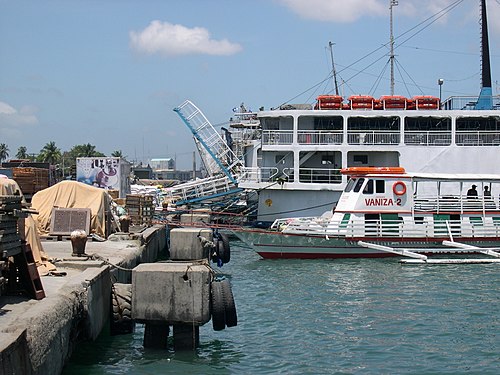
Sugbo Chinese Cemetery
If you're on the lookout for a truly unique and intriguing destination that falls under the category of Dark-Tourism, look no further than the Sugbo Chinese Cemetery in Cebu City, Philippines. This cemetery is like no other and is a true testament to the unique traditions and beliefs of the Chinese community that call Cebu their home. The cemetery is a maze of towering mausoleums and intricately designed graves that will leave you in awe of the craftsmanship and detail that has gone into each one. The contrast of the dark and mysterious atmosphere, the sprawling tombs, and the occasional streak of sunlight streaming through the trees, create a truly unforgettable experience. The Sugbo Chinese Cemetery is also a significant representation of centuries-old Chinese customs and traditions, showcasing the importance of ancestral worship and the role it plays in Chinese culture. It is a veritable time capsule that offers a glimpse of the culture and beliefs of the Chinese in Cebu throughout the years. To experience something truly once-in-a-lifetime, visit the Sugbo Chinese Cemetery and let yourself be transported into a world of history, mystery, and culture. It's an experience that's sure to stay with you for a lifetime.

Museo ng Bataan
If you're someone who has an interest in delving into the darker aspects of history, then the Museo ng Bataan in the Philippines should definitely be on your travel list. This museum serves as a reminder of the bravery and sacrifice of the Filipino and American soldiers who fought for their freedom during World War II. It is a place where visitors can pay their respects, learn about the war and its consequences, and reflect on the tragedies that occurred. The Museo ng Bataan showcases a rich collection of historical artifacts, including weaponry, uniforms, letters, photographs, and other objects that vividly depict the harsh realities of war. Visitors can gain a deeper understanding of the horrific events that transpired during and after the Bataan Death March, which claimed thousands of Filipino and American soldiers' lives. One of the most touching aspects of this museum is the Memorial Room, which serves as a tribute to the brave soldiers who gave their lives during the war. This room contains photographs and biographies of many of the soldiers, providing a clear image of the human cost of the war. Visiting the Museo ng Bataan is not only a historical experience but also a cultural one. It provides visitors with a rare opportunity to pay their respects to the brave soldiers who fought for freedom, learn about the war's consequences, and gain a better understanding of the dark aspects of history. It is truly an essential destination for those with an interest in dark tourism.

Museo ni Jose Rizal
The Museo ni Jose Rizal, also known as the Jose Rizal Museum, is a must-visit destination for those interested in dark tourism. It is a fascinating place that allows you to glimpse into the life and death of the Philippines' national hero, Jose Rizal. The museum is located in the old town of Calamba, Laguna, where Rizal spent his childhood and where he was born. The Museo ni Jose Rizal is a relevant destination for dark tourism because it showcases the life and struggles of a national hero who was executed by the Spanish colonizers for his stand against colonialism. Visitors can view exhibits that feature the last hours of his life, including letters, photographs, and artifacts from his incarceration prior to his execution. The museum also covers his life achievements, his literary works, including his two novels, Noli Me Tangere and El Filibusterismo, which played a significant role in the country's revolution against the Spanish colonial rule. Moreover, the museum is a poignant reminder of the struggles and sacrifices of Filipino heroes who fought for our country's freedom. It invites visitors to reflect on history and the importance of standing up against injustices. Overall, the Museo ni Jose Rizal is a great destination for those interested in dark tourism because it offers a glimpse into a dark chapter in Philippine history while celebrating the life and legacy of our national hero. It is a highly recommended place for anyone interested in learning more about Philippine culture and history.
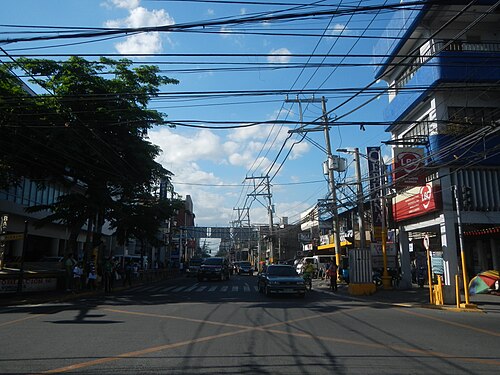
Museo ni Apolinario Mabini
If you're an avid traveler seeking for an exceptional experience, the Museo ni Apolinario Mabini should definitely be on your list. Tucked away in the province of Batangas in the Philippines, this museum is not only a treasure trove of fascinating history and culture, but it's also a pillar for Dark Tourism. For those unfamiliar with the term, Dark Tourism refers to adventurous travelers seeking to visit historical sites of tragedy, death, and trauma. Museo ni Apolinario Mabini is an excellent destination for this kind of experience as it houses artifacts and memorabilia of Apolinario Mabini - a Filipino revolutionary figure and Prime Minister who was handicapped and paralyzed. The museum features exhibits of his life, from his upbringing to his role in the fight against Spanish colonization and his eventual imprisonment by the Americans. It’s a humbling experience to see the prominent figure's personal belongings such as his mattresses, bedpan, and wheelchair that signify his hardships and struggles. Beyond the historical significance, visiting the Museo ni Apolinario Mabini is also a chance to gain a deeper understanding of the human condition and reflect on the courage and strength of those who have overcome adversity. Moreover, the charming museum building's rustic looks, surrounded by lush greenery, provide a peaceful and serene ambiance. All in all, if you're looking for a unique experience that goes beyond typical tourist attractions, this museum would be an excellent destination to add to your itinerary.
Trending Analysis

The Hidden Gems: Explore the Unknown and Beautiful Top 10 Destinations in the World
Embark on a journey to discover the hidden treasures of the world's most awe-inspiring and lesser-known destinations. This analysis brings you the top 10 breathtaking places that remained obscure yet ...

10 Affordable Destinations to Visit in February in the USA
February is a great time to explore the USA, especially if you're looking for affordable destinations. From sunny beaches to snowy mountains, there's something for everyone on this list of the top 10 ...

Explore the Top 10 USA Destinations for Wildlife Enthusiasts
Discover the best destinations in the United States for wildlife enthusiasts! From bison herds in Yellowstone National Park to whale watching off the coast of Alaska, these top 10 destinations offer u...

Top 10 Beach Destinations in USA - Perfect for a Close-By Getaway
Looking for a beach getaway without having to travel too far? Look no further than our list of the top 10 beach destinations in the USA that are perfect for a close-by getaway. From the sunny shores o...
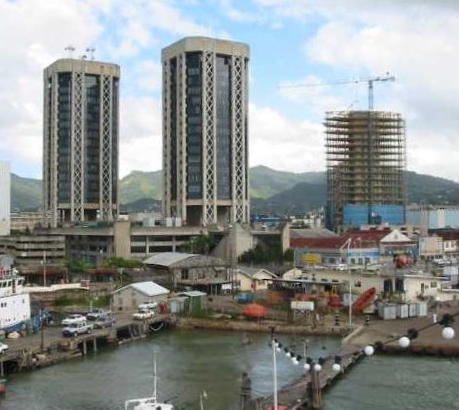
Experience the Thrill of Carnival in Trinidad's Top 10 Destinations
Get ready to be swept away by the colorful and vibrant Carnival celebrations in Trinidad's top 10 destinations. From Port of Spain to San Fernando, these destinations offer an authentic and unforgetta...

Top 10 Dark-Tourism Destinations in Japan - A Comprehensive Analysis
Discover the darkest side of Japan with our definitive list of the Top 10 Dark-Tourism Destinations in the country. Our expert analysis covers everything from mysterious temples and haunted forests to...

Top 10 Sightseeing Destinations in USA | Explore the Best of America
Discover the top 10 sightseeing destinations in the USA and experience the best of America. From the stunning Grand Canyon to the iconic Statue of Liberty, each destination offers something unique and...

Top 10 Honeymoon Destinations in Southwest USA | Your Romantic Escape
Looking for the perfect destination for your honeymoon in Southwest USA? Look no further than our curated list of the top 10 honeymoon destinations. From breathtaking scenic views to luxurious resorts...

Top 10 Affordable Beach Destinations in the US | Cheap Beach Vacations
Looking for a budget-friendly beach vacation? Look no further than these Top 10 Affordable Beach Destinations in USA. From the pristine beaches of the Gulf Coast to the charming towns of the East Coas...

Top 10 Party Destinations in Hungary - Explore the Beautiful Nightlife
Discover the ultimate party experience in Hungary with our analysis of the top 10 destinations that combine vibrant nightlife and stunning beauty. From the energetic streets of Budapest to hidden gems...